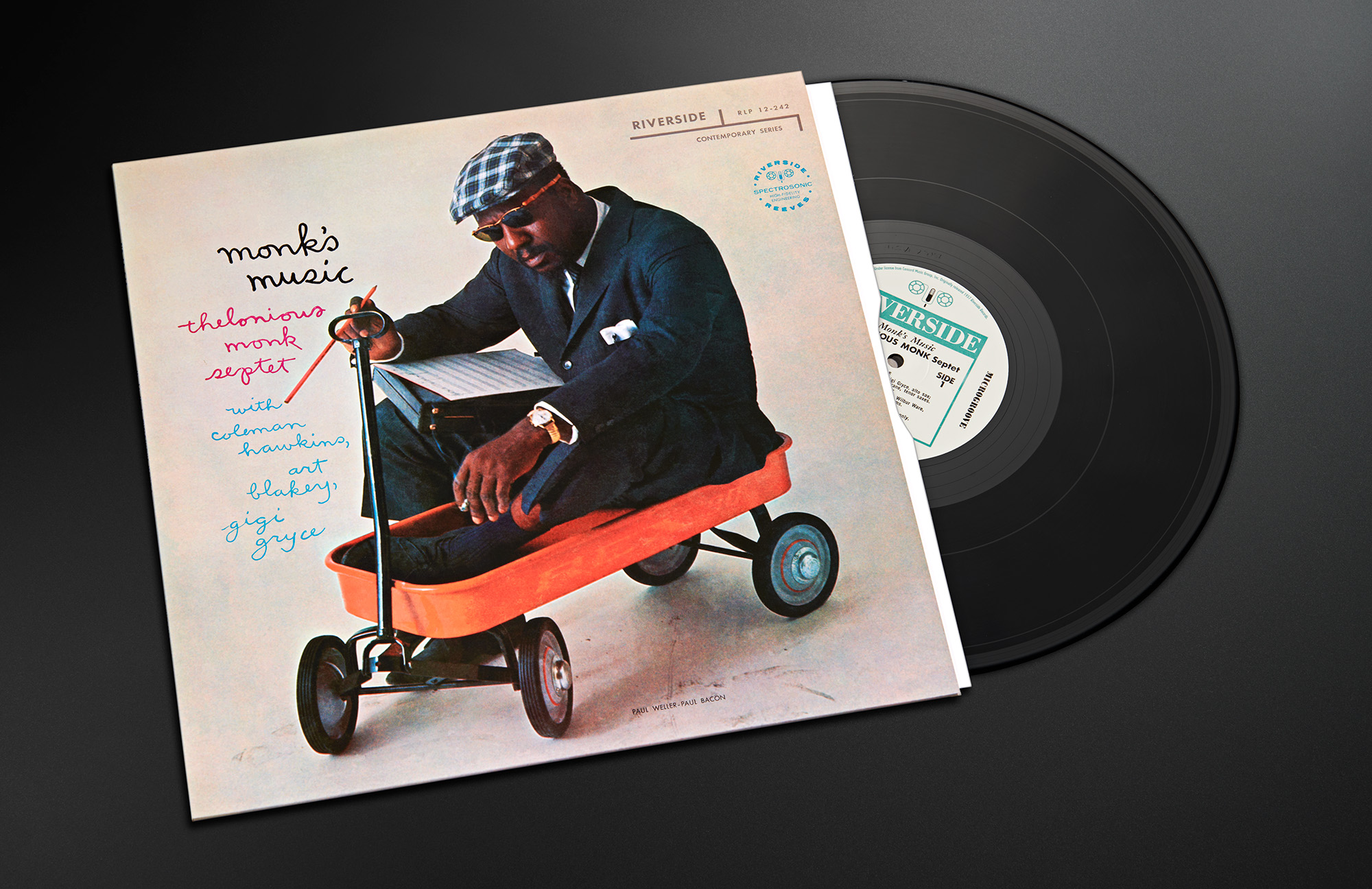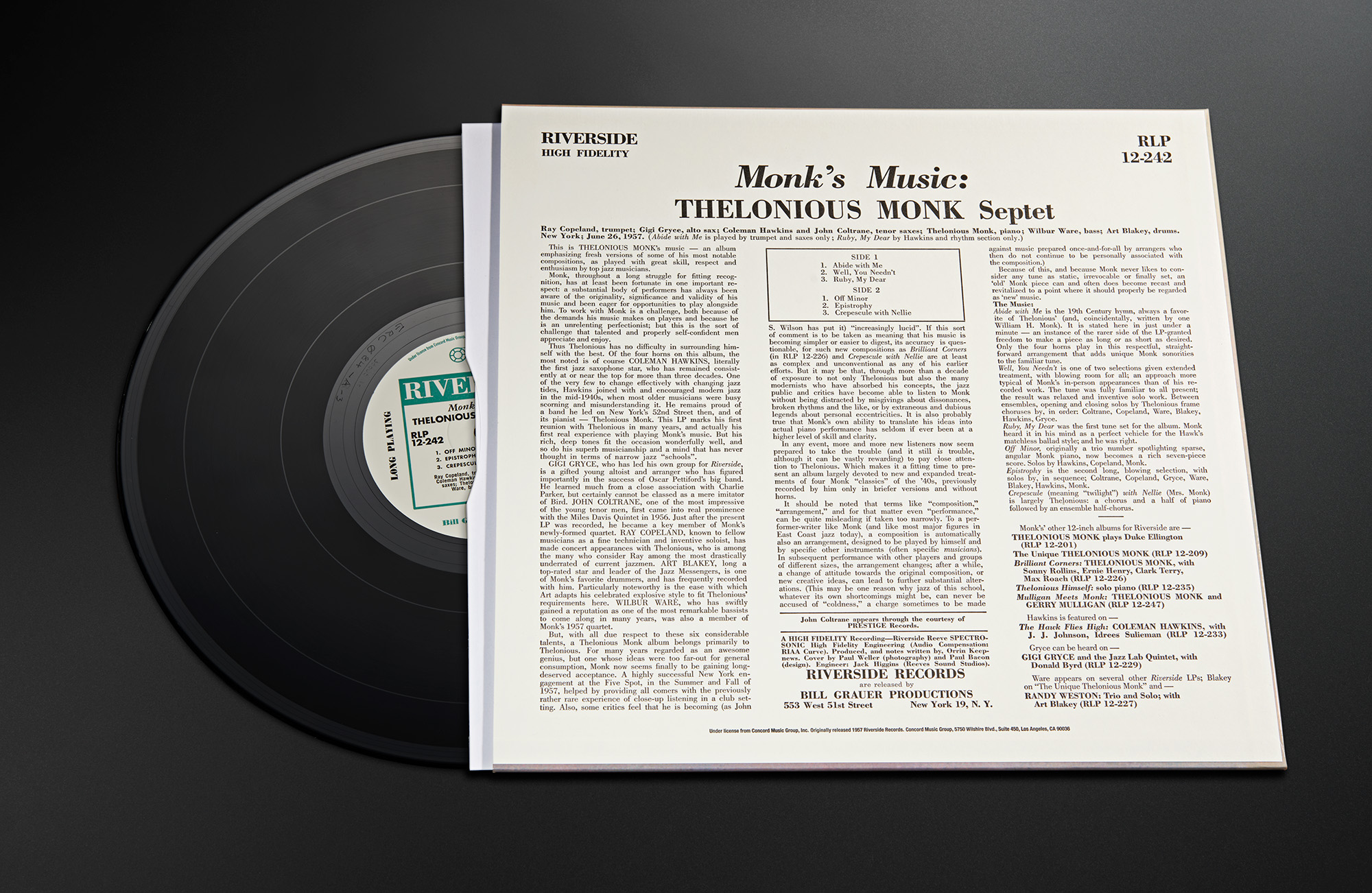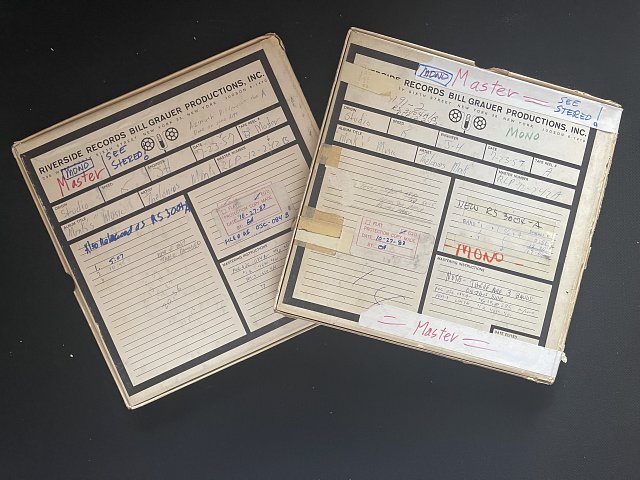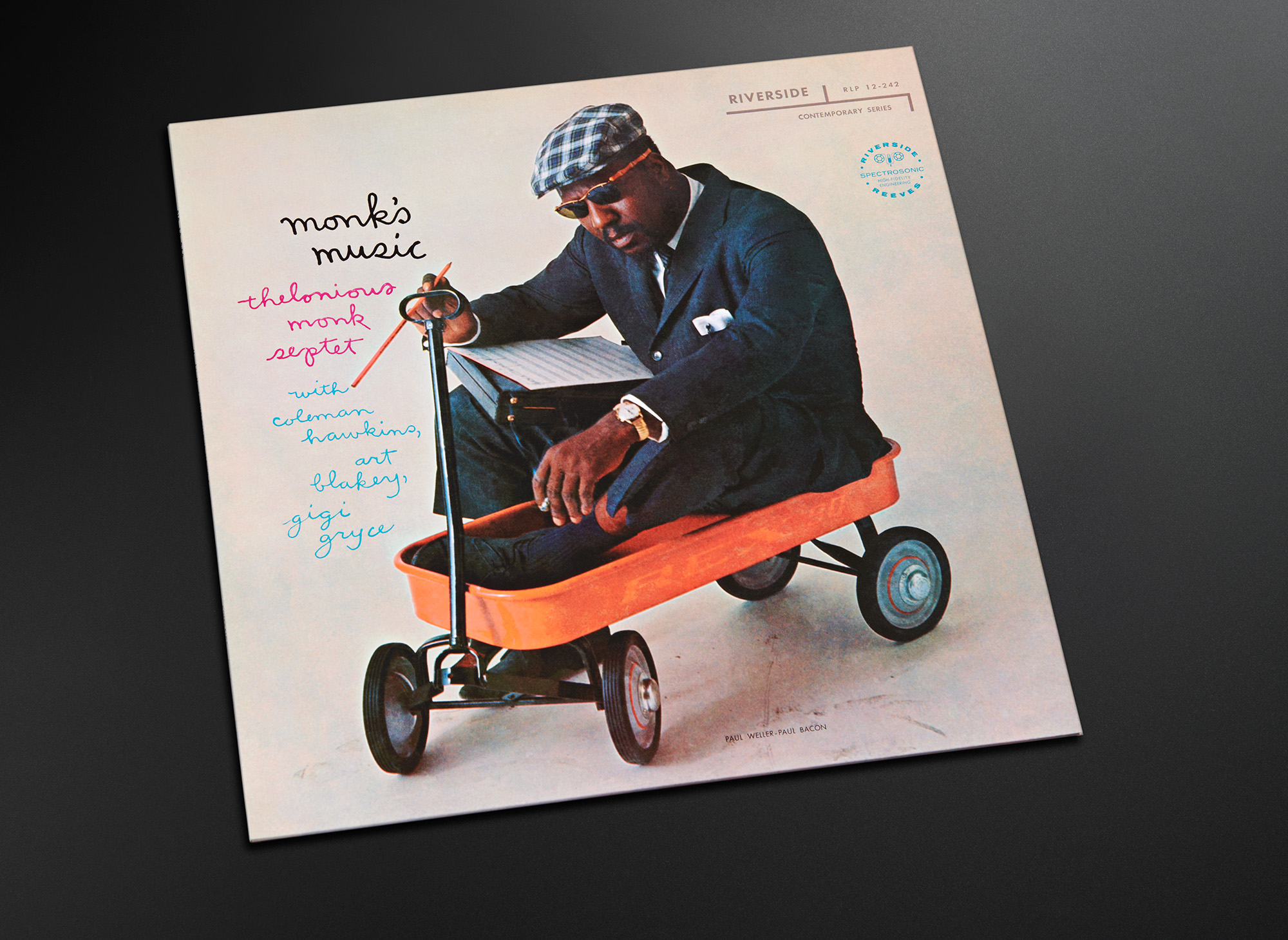Monk in Mono Has It All – Even The Bass
"Monk's Music" reissue by The Electric Recording Company shows why mono is the way to go with this classic.
Capturing the essence of music in the recording studio is something of a black art. The late Norwegian audio engineer Jan Erik Kongshaug, known for his great work with the record label ECM on several hundred recordings, once explained to me a key element of his tradecraft. Many engineers, he said, would first place microphones in approximately the right positions, then hit the mixing console and work with equalization and level adjustments to achieve a good, balanced sound. Kongshaug, in contrast, would leave every setting flat on the console, going back and forth between the control room and the studio, working solely with fine tuning microphone placements and listening to the musicians, until he had the sound he wanted. Then, and only then, would he start twiddling knobs and pushing faders, from a much higher base level of audio fidelity.
The importance of microphone placement and recording methodology is very much in evidence on Monk’s Music, the 1957 Riverside classic by the Thelonious Monk Septet. It was recorded simultaneously in mono and stereo, resulting in two quite different recordings of the same session. The album has recently been reissued by Vinyl Me, Please (VMP) in an AAA stereo version cut by Ryan Smith , and in AAA mono by the The Electric Recording Company (ERC) in England. This review deals mainly with the latter release.
 Thelonious Sphere Monk may have been considered “difficult” by the mainstream jazz crowd, and his records didn’t sell much at the time, but creatively he was really flying in 1957. Firmly rooted in big band swing and stride, yet supremely sophisticated and hip, wildly eccentric, noisy, playful – and a truly great composer in the Ellington/Mingus vein. That a record as great as Monk’s Music wasn’t even the best he released that year, speaks volumes about this key period in the great pianist and composer’s creative life. His masterpiece, Brilliant Corners, had come out in April, after being recorded in late December the year before with Sonny Rollins and a cast of jazz luminaries. Over several sessions in ‘57 Monk also recorded much of what was to become Thelonious Monk with John Coltrane, which wasn’t released until 1961 on the Riverside subsidiary Jazzland.
Thelonious Sphere Monk may have been considered “difficult” by the mainstream jazz crowd, and his records didn’t sell much at the time, but creatively he was really flying in 1957. Firmly rooted in big band swing and stride, yet supremely sophisticated and hip, wildly eccentric, noisy, playful – and a truly great composer in the Ellington/Mingus vein. That a record as great as Monk’s Music wasn’t even the best he released that year, speaks volumes about this key period in the great pianist and composer’s creative life. His masterpiece, Brilliant Corners, had come out in April, after being recorded in late December the year before with Sonny Rollins and a cast of jazz luminaries. Over several sessions in ‘57 Monk also recorded much of what was to become Thelonious Monk with John Coltrane, which wasn’t released until 1961 on the Riverside subsidiary Jazzland.
The young Coltrane, still in beta as a player, searching, staccato, not yet producing his famed sheets of sound, is all over Monk’s Music. The album also features Coleman Hawkins on tenor sax, Gigi Gryce on alto, Ray Copeland on trumpet, Wilbur Ware on bass and Shadow WIlson and Art Blakey on drums.
The players gathered in New York’s Reeves Sound Studios on the night of June 26th. Unlike Brilliant Corners, which featured mainly fresh compositions from what was arguably the greatest composer in jazz at the time, the session featured several well-known Monk tunes The highlight is the eleven and a half minutes long version of "Well, You Needn’t", a composition first heard on the modestly titled Genius of Modern Music in 1951. The ballad "Ruby, My Dear" was composed in 1945, and “Epistrophy”, co-written with Kenny Clarke, dates all the way back to 1941.
Monk's Music has a less coherent overall feel than Brilliant Corners. The greatness lies in what Monk and his featured soloists does with the material. The first time I heard it, probably sometime in the 1980s, I laughed out loud at the sheer audacity of Monk’s playing and arrangements. Monk the pianist is his totally totally unique, angular, syncopated, percussive, pause-filled and idiosyncratic self. The horn-rich arrangements are great, the soloing of Coltrane and Hawkins a pure joy. The record really kicks off a few minutes into "Well, You Needn’t" when Monk shouts "Coltrane! Coltrane!”, and the 31 year old takes his first solo. He and Hawkins are well up to the task, while Copeland and Gryce are perhaps struggling a bit to keep up.
The monophonic glory of Monk’s Music can be heard on the latest release by the Electric Recording Company. The UK reissue label specializes in numbered, very limited and very expensive all analog releases, mastered and cut from the original master tapes on an all valve production chain utilizing 1950’s Lyrec and EMI valve tape machines, a Ortofon DS522 mono cutter head and a Ortofon DS601 for stereo. There is no equalization or compression. What’s on the tape is what you get, as described in my recent review of the label’s Vashti Bunyan and Terry Callier releases.
 The ERC approach also makes for an opportunity to reflect on the rather special history of the sound of Monk’s Music. As mentioned, the album was recorded simultaneously in mono and stereo, with entirely separate microphone setups. Stereo was in its infancy in 1957, and the equipment in Reeves Sound Studios on East 44th Street was rigged for mono only. Still, Riverside Records founders Bill Grauer, Jr. and producer Orrin Keepnews were determined to make this the first Riverside stereo recording. While studio engineer Jack Higgings presided over mono at the mixing desk in the control room, Riverside staff engineer Ray Fowler worked in parallel from an audio isolation booth with a brand new portable stereo tape recorder, fed from a secondary stereo microphone setup.
The ERC approach also makes for an opportunity to reflect on the rather special history of the sound of Monk’s Music. As mentioned, the album was recorded simultaneously in mono and stereo, with entirely separate microphone setups. Stereo was in its infancy in 1957, and the equipment in Reeves Sound Studios on East 44th Street was rigged for mono only. Still, Riverside Records founders Bill Grauer, Jr. and producer Orrin Keepnews were determined to make this the first Riverside stereo recording. While studio engineer Jack Higgings presided over mono at the mixing desk in the control room, Riverside staff engineer Ray Fowler worked in parallel from an audio isolation booth with a brand new portable stereo tape recorder, fed from a secondary stereo microphone setup.
For some reason, the stereo setup didn’t have a microphone covering Wilbur Ware’s bass, resulting in weak, remote bass sound. The stereo version obviously has the wider soundstage with somewhat better instrument separation, but also sounds thinner, with less overall presence, energy and body to the instruments. The stereo tape recorder also failed on the recording of the last track, “Crepuscule with Nellie”, making it absent from the stereo LP version released in 1958. On some later stereo releases, a electronically re-channeled «stereo» version of the mono track was reintroduced. The difference between mono and stereo is very much audible on my 1977 Japanese stereo pressing, which ends with the original mono take of “Crepuscule with Nellie”. After the preceding five stereo tracks, the record suddenly comes alive.
This is why the 345 buyers who paid the equivalent of USD 436 for the ERC release, instead of a tenth of that amount for, say, the new VMP stereo version, will have access to a very special time machine for the ears. Lucky owners of an original or very early mono release will also know what I’m talking about. I haven’t heard the VMP, but although I’m sure it’s good, I’m reasonably confident that the ERC betters it, as is should. I just can’t see how the somewhat inferior stereo recording can compete, be it an original or any remastered reissue you care to mention.
 Sixty-six years of tape aging may have resulted in some loss, but judging from the sound of this record, the mono master tape is in excellent shape. When cranked loud, the sound is spectacular, even better than the sum of its parts. It gets a nine and not a ten for sound simply because the recording isn’t quite a ten. Monk’s piano has some weight and scale, but typically for recordings of the time, you get less low end weight and top end air and overtones than on the very best piano recordings. The horns sound good, but you’ve probably heard better. The bass, as mentioned, is far better than on the stereo version, although a bit soft and mushy. The drums are sensational, both Wilson’s and Blakey’s. Cymbals shimmering, rimshots ringing, toms popping wonderfully.
Sixty-six years of tape aging may have resulted in some loss, but judging from the sound of this record, the mono master tape is in excellent shape. When cranked loud, the sound is spectacular, even better than the sum of its parts. It gets a nine and not a ten for sound simply because the recording isn’t quite a ten. Monk’s piano has some weight and scale, but typically for recordings of the time, you get less low end weight and top end air and overtones than on the very best piano recordings. The horns sound good, but you’ve probably heard better. The bass, as mentioned, is far better than on the stereo version, although a bit soft and mushy. The drums are sensational, both Wilson’s and Blakey’s. Cymbals shimmering, rimshots ringing, toms popping wonderfully.
ERC presses flat profile vinyl at Record Industry in The Netherlands. My review sample was perfectly flat, without a single crackle or other unwanted surface noise. The beautiful tip-on cover was also faultless, wrapped in silk paper and a Japanese-style translucent OBI, made from bespoke paper stock, set with old-fashioned brass letterpress type and printed on an old Heidelberg press. It doesn’t get much better. My only gripe is with the flimsy Nagaoka anti-static inner sleeve, which easily gets crumpled inside its plain white paper outer. A full rice paper style sleeve may have been more user friendly, although I suspect the lack of historic authenticity prohibits the purists at ERC from adapting such a solution.
So what?, you may ask. Most Monk fans will never get to hear this release. The ERC was very, very expensive at the outset, sold out almost immediately, and is being flipped for obscene amounts on Discogs. If you just want a clean copy to enjoy the music, get the VMP or any other recent stereo reissue. If you have a mono cartridge (or a preamp with a mono switch) you will want to hear Monk's Music in mono, though. In fact, the mono sounds great even with a stereo setup. There are several dozen used copies of earlier mono pressings for sale on Discogs. Some very expensive, some not so. You may not get the pristine facsimile quality of the ERC release, but you’ll get some truly hip music in its optimal format.











































.png)








